Search Images
Browse Content (p. 257)
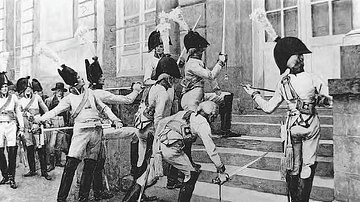
Image
Prussian Officers Sharpen Their Swords on the Steps of the French Embassy in Berlin, 1806
Hoping to provoke war with France, Prussian officers of the elite Life Guards Regiment sharpen their swords on the steps of the French embassy in Berlin in the summer of 1806. Drawing by Felician Myrbach, 1906.
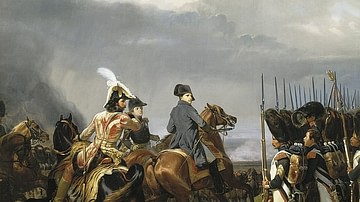
Image
Battle of Jena, 14 October 1806
During the Battle of Jena-Auerstedt (14 October 1806), Napoleon reprimands a grenadier of his Imperial Guard who shouted for an attack. Oil on canvas painting by Horace Vernet, 1836.
Palace of Versailles.
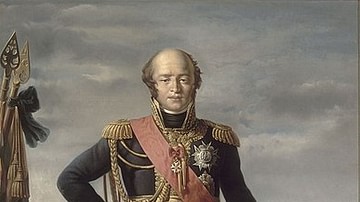
Image
Louis-Nicolas Davout
Louis-Nicolas Davout (1770-1823), Duke of Auerstedt and a marshal of the French Empire during the Napoleonic Wars (1803-1815). Nicknamed the "Iron Marshal" for the strict discipline he imposed on his Corps, Davout never lost a battle and...
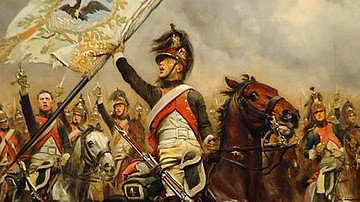
Image
French Dragoon with a Captured Prussian Flag at the Battle of Jena
A French dragoon rides off with a captured Prussian flag at the Battle of Jena-Auerstedt (14 October 1806) during the War of the Fourth Coalition. Painting by Édouard Detaille, 1898.
Musée de l'Armée, Paris.
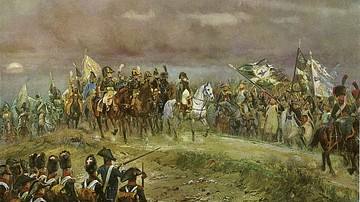
Image
Napoleon After the Battle of Jena
French soldiers present captured Prussian flags to Emperor Napoleon I after the Battle of Jena-Auerstedt (14 October 1806). Painting by Édouard Detaille, late 19th century.
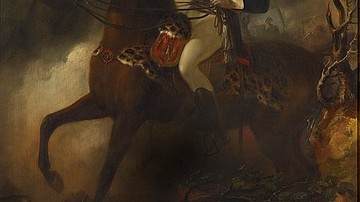
Image
Death of Prince Louis Ferdinand of Prussia
The death of Prince Louis Ferdinand of Prussia (1772-1806) in the Battle of Saalfeld (10 October 1806) during the War of the Fourth Coalition. Painting by Peter Edward Stroehling, c. 1806-1816.
Royal Collection.
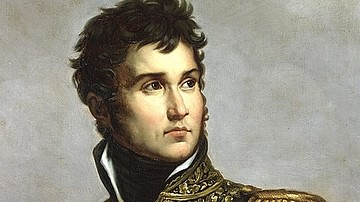
Image
Jean Lannes
Jean Lannes (1769-1809), 1st Duke of Montebello, a marshal of the French Empire during the Napoleonic Wars. Oil on canvas portrait painting by Julie Volpelière after an original by Antoine-François Gérard, 1834. In the Musée de l'Armée...
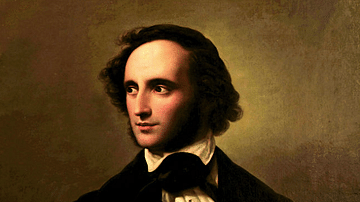
Image
Felix Mendelssohn by Hensel
An 1847 oil-on-canvas portrait by Wilhelm Hensel of the German composer Felix Mendelssohn (1809-1847). (Stadtmuseum Düsseldorf)
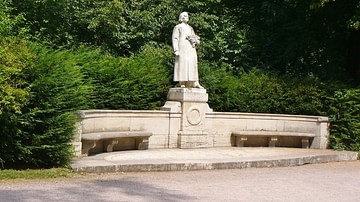
Image
Franz Liszt Monument, Weimar
A monument in Weimar, Germany to Franz Liszt (1811-1886), the Hungarian composer of Romantic Music.
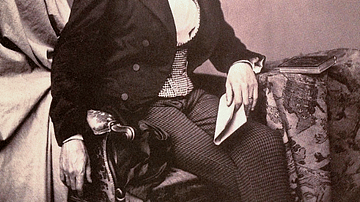
Image
Franz Liszt in 1858
An 1858 photograph taken by Franz Hanfstaengl of the Hungarian virtuoso piano player and composer Franz Liszt (1811-1886).